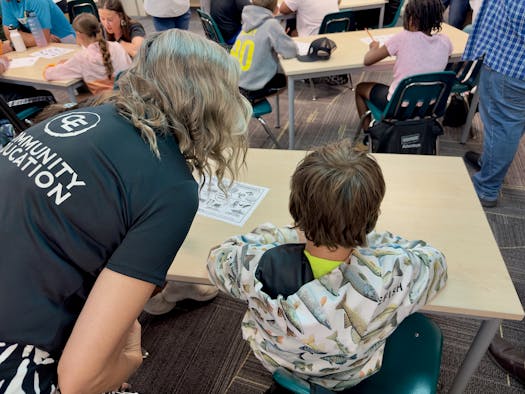This article originally appeared on the Star Tribune website on August 29, 2023. You can find the original here.

EDER CAMPUZANO, STAR TRIBUNE
Back-to-school season can mean hunting for last-minute deals on backpacks and pencils or making a final summery outing to the Great Minnesota Get-Together to try the dozens upon dozens of new foods.
This year, it also means students will return to the classroom as questions remain over the status of school resource officer programs in several districts and in an era when losing your lunch money becomes a thing of the past.
Here are five ways school will look different in Minnesota this year:
Free school meals
Children attending Minnesota’s public schools and private schools that participate in national school meals programs will no longer have to pay for breakfast or lunch. That’s because the Legislature passed a universal school meals bill earlier this year, which Gov. Tim Walz signed into law in mid-March.
The new law takes effect at the beginning of the school year, making outstanding lunch balances a thing of the past. Still, districts, including Minneapolis, St. Paul and Anoka-Hennepin, are asking families to complete forms that until this year determined if their children qualified for free meals. That’s because some federal aid is still tied to those metrics.
Menstrual products in bathrooms
The sweeping education bill Walz signed later in the spring also included a provision that requires schools to stock bathrooms with free menstrual products. Such a program is necessary, argued Rep. Sandra Feist, DFL-New Brighton, because students who can’t afford pads and tampons skip class when they don’t have access to those products, affecting their academic performance.
“Helping students who regularly miss school stay in class is a wise investment. Chronic absenteeism costs a lot more than free period products,” Feist said during a committee hearing where she unveiled the program’s annual $2 million price tag.
Questions over school resource officer programs
At least two Minnesota law enforcement agencies have announced they will not provide school resource officers to patrol middle and high schools for the time being, citing confusion over a new law that restricts how they may restrain students.
In Bloomington, the district and local police are still adding school resource officers to two middle schools in a bid to curb disruptive and sometimes violent behavior. Those officers, school officials say, will call for backup if they encounter situations where they believe a student must be restrained.
Violence prevention talks, lockdown drill debriefs
Minnesota students will undergo at least one hour of violence prevention training starting this school year as part of an overhaul of how the state’s public schools address active shooter drills. Teachers will be required to lead class discussions following lock-down and lock-out drills.
In addition, school districts can no longer hold active shooter simulations when more than half of students are in the building, effectively banning the practice in the state’s public schools. The change was inspired in part by claims from students who said real-life demonstrations of active shooter situations were unnecessarily traumatic, a point echoed by legislators who have worked inside classrooms.
A back-to-basics approach to reading instruction
Literacy has been on the decline in Minnesota for years — about half of Minnesota students met state reading benchmarks this spring, according to the most recent data provided by the Department of Education. The trend has spurred state lawmakers to more strictly regulate the way Minnesota public schools teach reading.
Districts previously adopted their own literacy plans and had wide latitude to purchase whatever books and other reading materials they chose. Now, the state’s public schools must choose from a list of approaches approved by the Minnesota Department of Education. The agency is expected to release its list of approved methods and instructional materials later this year.
